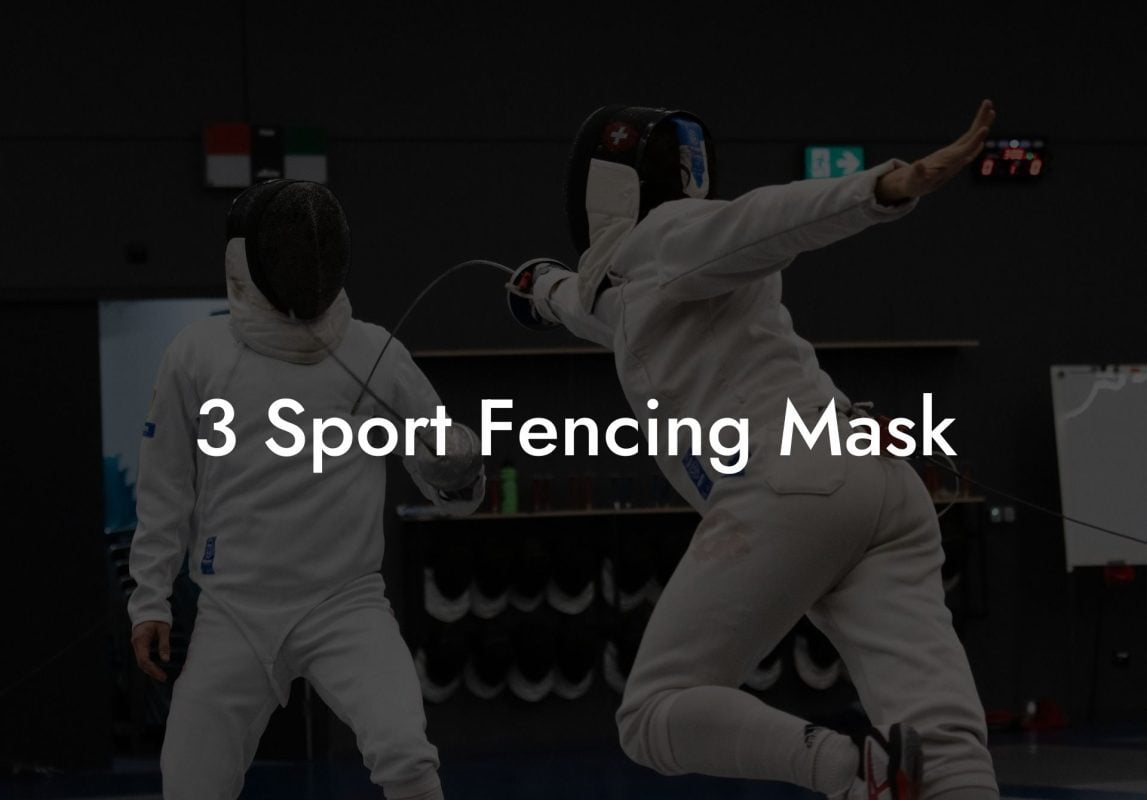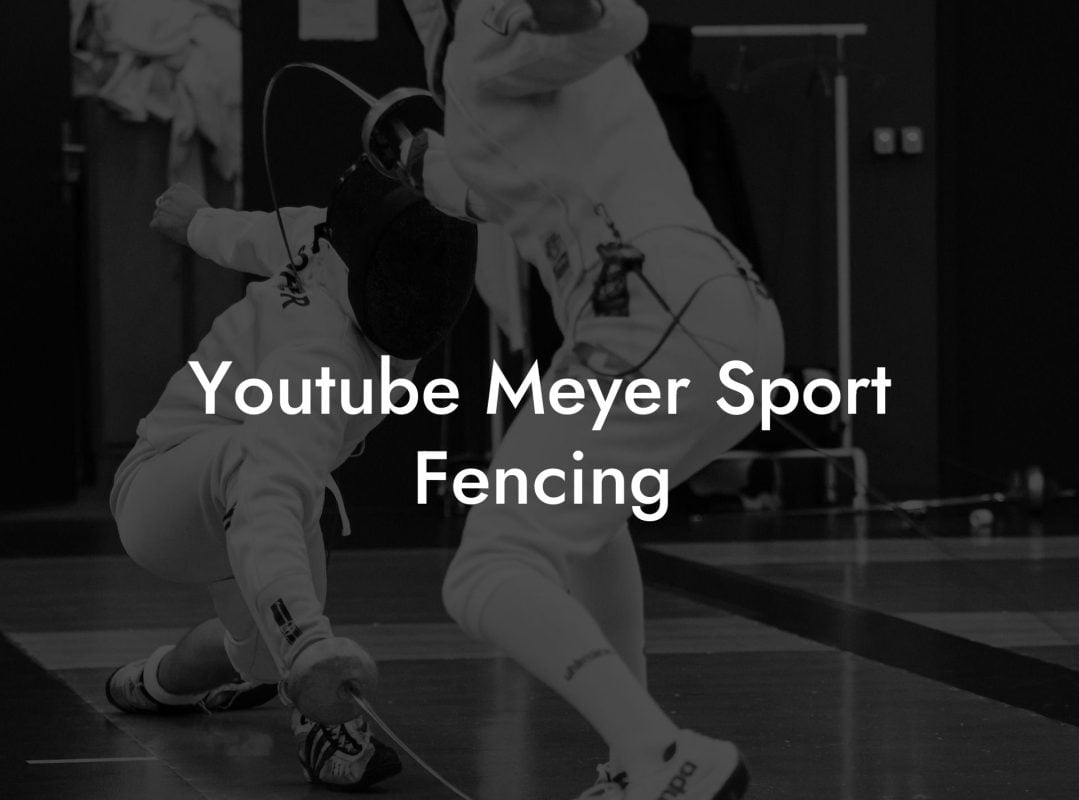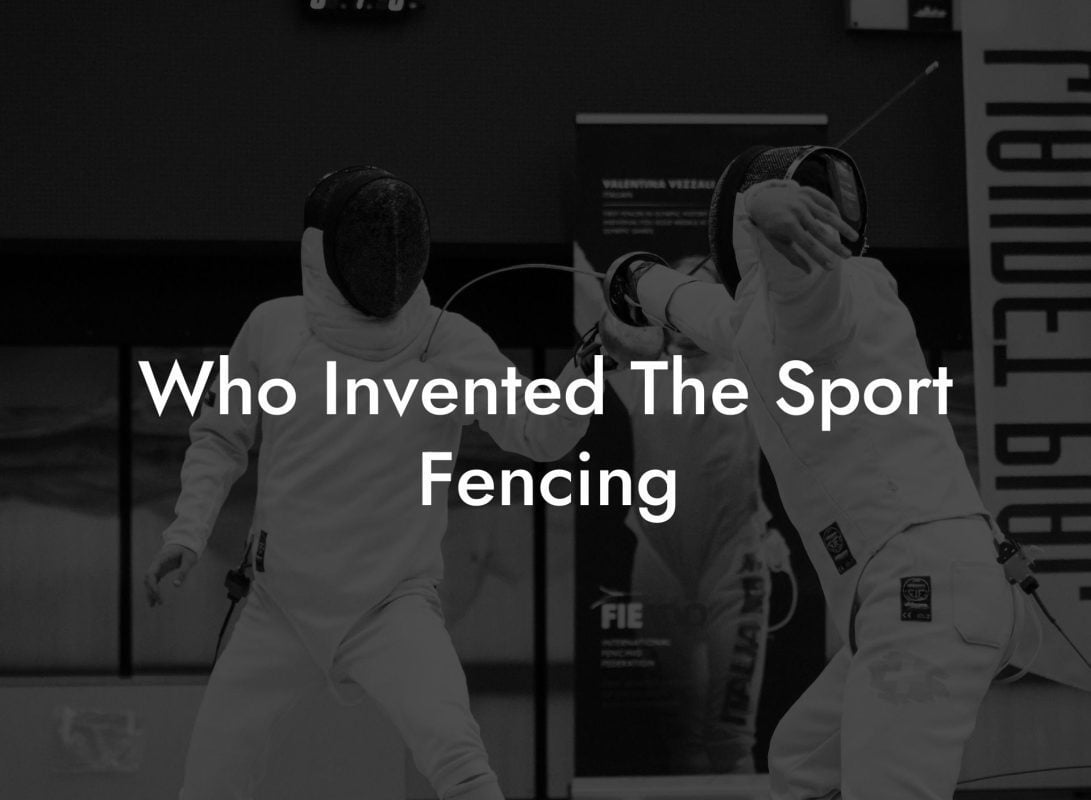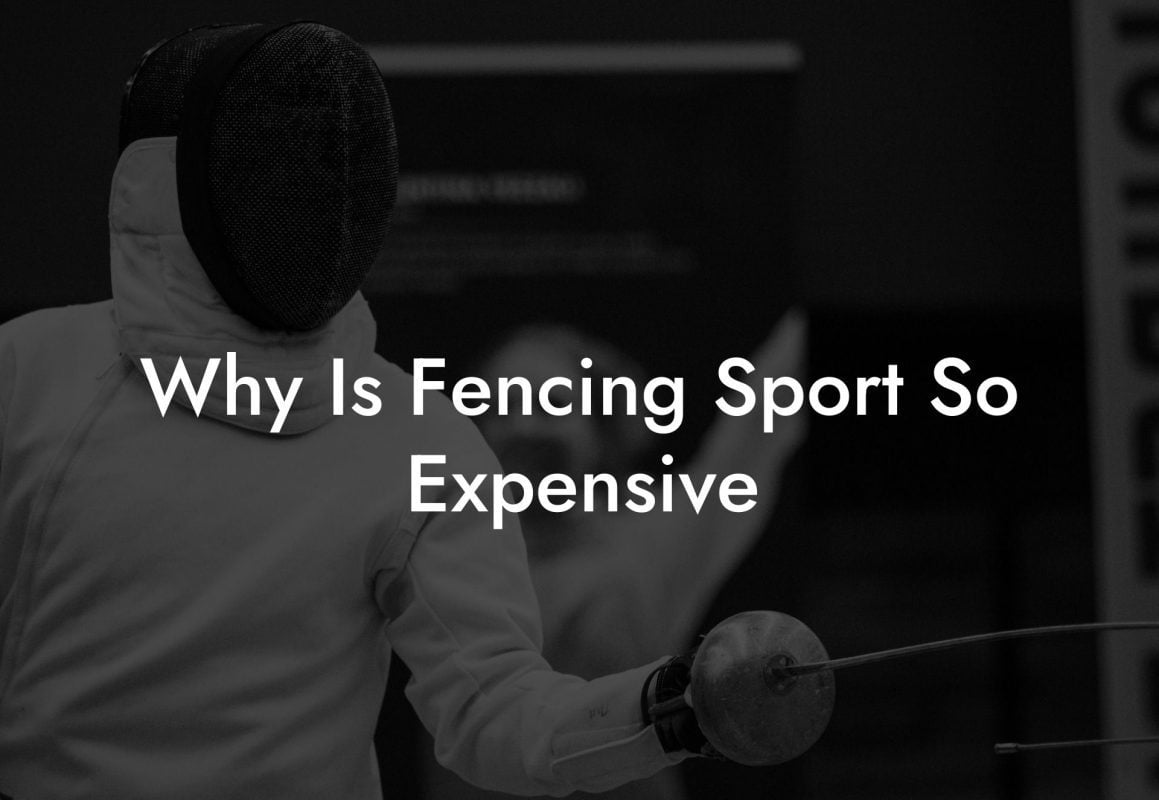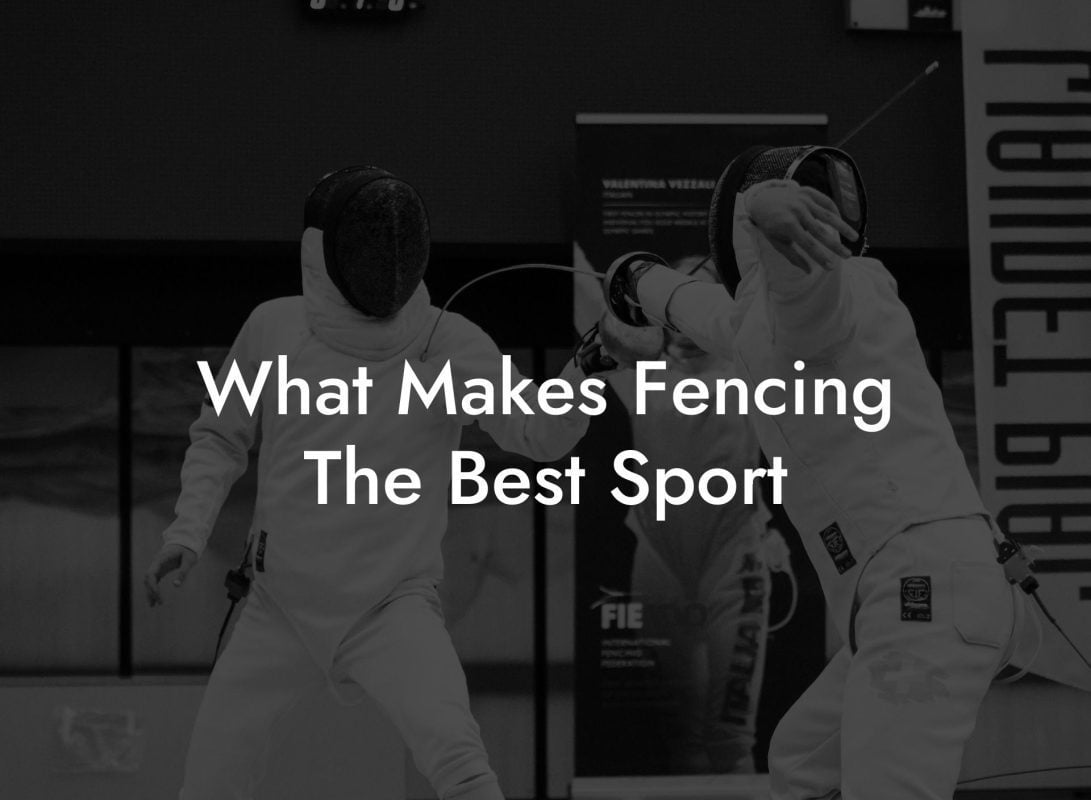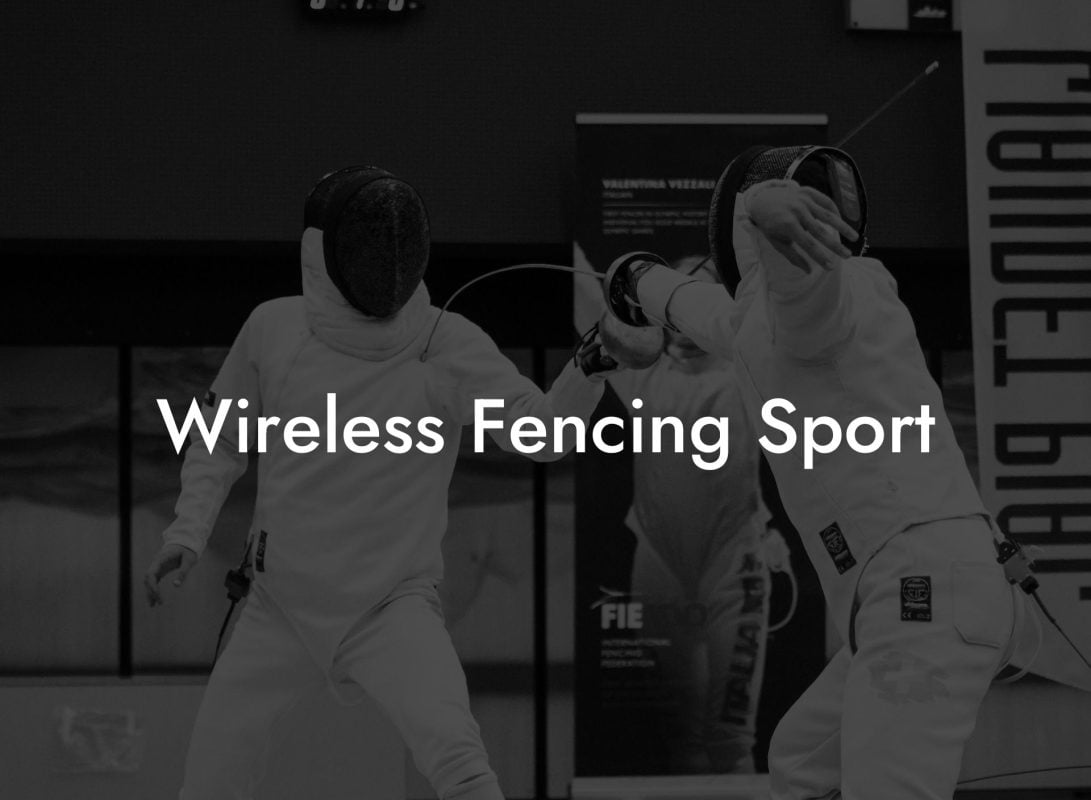Are you excited for the Tokyo 2020 Olympics? Dying to learn more about the intensely strategic and physically demanding sport of fencing? You've come to the right place! In this post, we will delve into the world of fencing at the Olympics, discussing the different events, rules, and famous athletes who have left their mark in this historic sport.
Fencing Olmypic 2020 Sport Table of Contents
Three Fencing Disciplines: Foil, Epee, and Sabre
Fencing in the Olympics consists of three distinct disciplines: foil, epee, and sabre. Each discipline has its own unique set of rules and techniques. Let's take a closer look at each one.
Foil
Foil is the most technical of the three disciplines. Points are scored by striking the opponent on their torso with the tip of the foil, which has a circular guard to protect the hand. Foil fencers must follow the 'right of way' rule, which means they must establish priority before striking their opponent.
Epee
Epee is a heavier weapon than the foil and is considered the 'purest' form of fencing. In epee, the entire body is a valid target area, and no right of way rules apply. Points are scored with the tip of the weapon, and fencers often rely on bladework, distance, and timing to score points.
Sabre
Sabre is the fastest and most aggressive of the three disciplines. Points can be scored using both the tip and the edge of the sabre, and the target area includes the entire body above the waist. Like foil, sabre fencing follows the right of way rules.
Olympic Fencing Events
There are a total of 12 fencing events at the Olympics, divided into men's and women's individual and team events for each discipline. The individual events consist of a knockout-style competition, while the team events consist of a round-robin format followed by a knockout stage.
Olympic Fencing Rules
Olympic fencing matches are supervised by a referee, who uses electronic scoring equipment to determine if a valid hit has been made. A match consists of three three-minute periods, with the first fencer to score 15 points being declared the winner. If neither fencer reaches 15 points, the fencer with the highest score wins. In the case of a tie, an extra minute is added, and the first fencer to score a point wins. In team events, the team with the highest combined score wins.
Famous Olympic Fencers
Throughout the history of the Olympics, numerous fencers have made a lasting impact on the sport. Some noteworthy names include:
- Aladar Gerevich (Hungary): Widely regarded as the greatest fencer of all time, Gerevich won seven gold medals and one silver medal in sabre between 1932 and 1960.
- Valentina Vezzali (Italy): Vezzali is considered one of the greatest female foil fencers, winning six gold medals and two silver and bronze medals between 1996 and 2012.
- Sergey Bida (Russia): A top-ranked epee fencer, Bida won the gold medal in the men's team epee event at the 2016 Rio Olympics.
Fencing Olmypic 2020 Sport Example:
<p>Imagine a thrilling sabre match between two highly skilled fencers at the 2020 Tokyo Olympics. They engage in lightning-fast exchanges, each trying to establish right of way and land a touch on their opponent. The crowd cheers as the score remains close, with both athletes showcasing their athleticism and skill. As the clock ticks down, one fencer manages a daring attack, scoring the winning touch and securing the gold medal for their country.</p>
We hope this guide gave you an insightful glimpse into Olympic fencing and inspired you to root for your favorite fencers at the Tokyo 2020 Olympics! So, why not share this article with fellow fencing enthusiasts or broader sports fans? Don't forget to explore other guides on the Anchorage Fencing Club website for more insight into the fascinating world of fencing.



